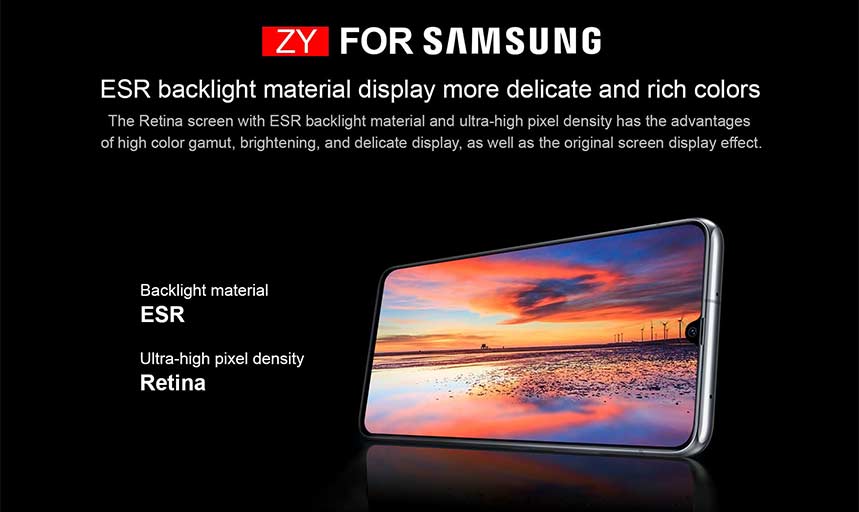
In recent years, with the development of full-screen mobile phones, In-cell LCD screens have gradually been applied to various mobile phone brands. In the In-cell LCD screen assembly, In-cell screens of LTPS In-cell LCD, IPS In-cell LCD, and Retina In-cell LCD have gradually appeared. Let me introduce the characteristics of the three In-cell LCD screens.

What is LTPS In-cell LCD?
LTPS (Low-Temperature Poly-silicon) is a type of polysilicon, which means that the arrangement of molecular structure in a crystal grain is neat and directional, so the electron mobility rate is faster than that of disordered amorphous silicon. Because of the slow electron movement rate of the amorphous silicon a-si, the drive circuit (gate scanning circuit, data circuit) of the panel can only be done on the IC (voltage -10V~15V), and because LTPS has fast electron movement, Therefore, he built the driving circuit (L/S amplifier circuit in the gate direction, switch circuit in the data direction) around the glass substrate, so he only needs to buy low-voltage IC chips (which are cheaper). When LTPS In-cell LCD is applied to the mobile phone screen assembly, it has the features of ultra-thin, lightweight, fast response speed, high resolution, and low power consumption.
What is IPS In-cell LCD?
IPS screen (In-Plane Switching, plane switching) technology is a liquid crystal panel technology launched by Hitachi in 2001, commonly known as "Super TFT". IPS screen is a technology based on TFT, and its essence is TFT screen. IPS is a film with a layer of resin attached to the surface. The advantage of the IPS screen is that it is oriented into an opaque mode. The electrode with the vertical orientation of the liquid crystal molecules determines how much light is transmitted. The higher the voltage, the more molecules are twisted.
IPS is mainly used on hard screens. The reason why IPS hard screens have a clear and ultra-stable dynamic display effect depends on its innovative horizontal conversion molecular arrangement, which changes the vertical molecular arrangement of VA soft screens, thus having a more robust and stable liquid crystal structure. The reason why it is called an IPS hard screen is to add a hard protective film to the LCD panel to prevent the LCD screen from being damaged by external hard objects. IPS In-cell LCD has fast response speed, large viewing angle, vivid and saturated display color, and stable dynamic high-definition display.
What is Retina In-cell LCD?
Retina display is also called retina screen, Retina is actually the name of display technology. This technology compresses more pixels onto a single screen to achieve a delicate screen with amazing resolution. Although the resolution of the screen generally appears in the format of "number of pixels x number of pixels", it is the pixel density, that is, PPI, not the number of pixels, that really determines the screen resolution. In addition, in addition to PPI, the distance between the eyes and the screen also determines whether a screen is clear enough to be called "Retina". For smartphones, 326 PPI can be called Retina display. Retina In-cell LCD uses the same technology as LTPS In-cell LCD, but Retina screens have more advantages in PPI.

Come to HENGWEI ye and choose what you like
Mobile screen,We create a series of high-quality mobile screens for you
